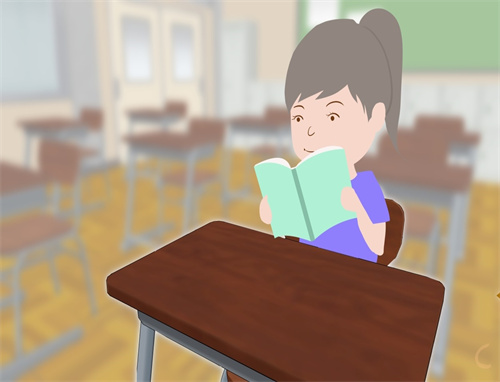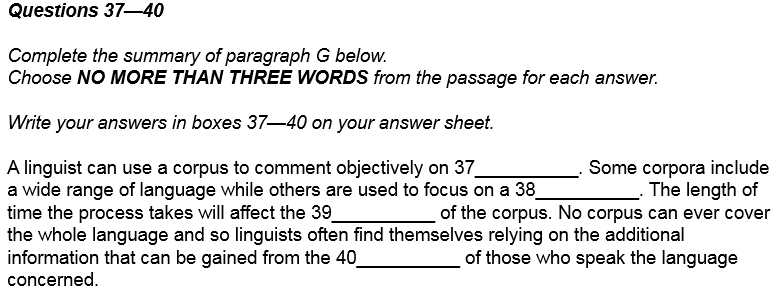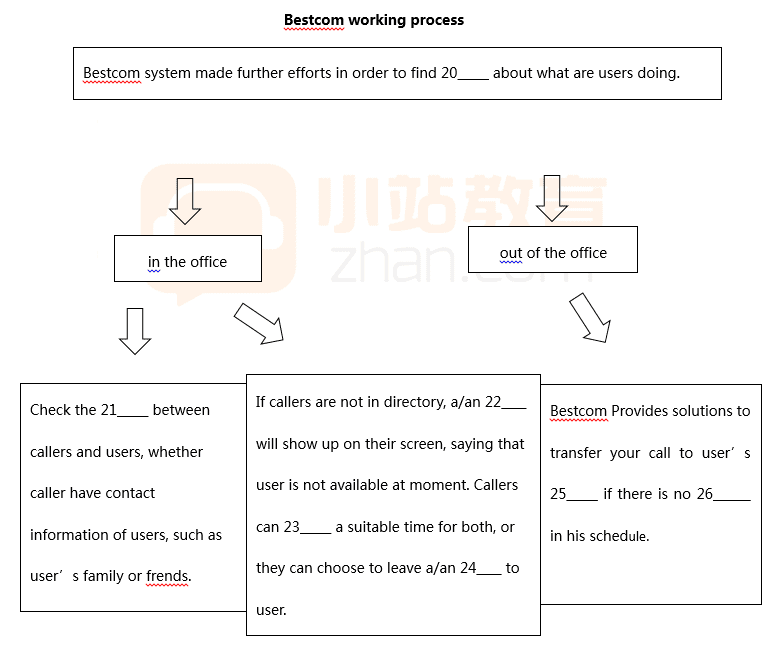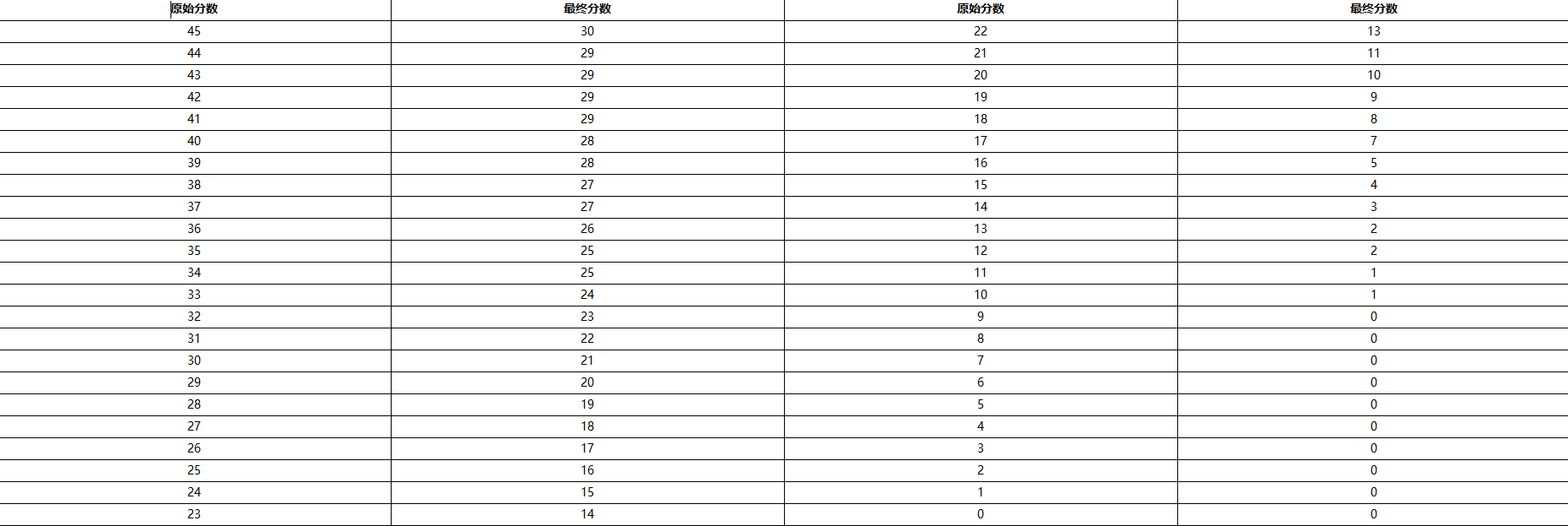托福备考之怎样养成良好阅读习惯?今天小编给大家带来了托福备考之怎样养成良好阅读习惯,希望能够帮助到大家,下面小编就和大家分享,来欣赏一下吧。
托福备考之怎样养成良好阅读习惯
在托福阅读备考的过程中,很多同学在都会感到有时在做题中的问题,是阅读速度慢从而影响到了后的答题准确率。在我们的练习中应该怎样去提升自己的答题速度呢?有什么更加优化托福阅读的方式呢?那么,在以下的内容中就为大家详解介绍一下吧。
无论是在托福备考或是四六级英语备考,只要是在语言类考试的复习中,你都可以发现,阅读能力都是建立在足够的词汇基础上的。所以,想要提升自己的阅读能力,词汇基础自然是必不可少的基础环节。那么,想要初入托福练习的朋友肯定会问,想要通顺的阅读一篇文章,词汇量需要多少呢?
其实,对于在托福备考的过程中,如果你认认真真的将一本单词书背诵和理解70-80%,在这时候,你就会发现,托福阅读理解对你来说,并不是一件困难的事情。当然,我们还需要提醒大家,虽然在这里说到的是词汇量的基础,但是,单词的理解还是需要回归到句子中加以理解,仅仅纠结单词本身的含义,对于阅读的提升也不能给予很多帮助。
当然,想要快速理解句子中的完整内容,仅仅依靠词汇量的提升还是不够的。在很大部分时间中,我们还是需要靠语法知识准确的理解其中的内容。特别,是在文章中一些长难句的理解过程中,我们就需要通过词汇与语法的互相结合,精准定位,准确找到答案。建议大家,在练习阅读的同时,也需要找到自己语法知识的弱点加以强化,同时,对于一些长句和复杂句加以反复的练习,找到适合自己的方法。
在托福考试中,托福阅读的时间对于多数同学来说都会是比较紧张的。所以,在托福阅读的训练中养成一个良好的习惯是非常重要的。比如,在托福阅读练习中,尽量避免逐字逐句阅读、出声阅读的方式,这样的方法都会拖延阅读时间。同时,在阅读内容中,我们也需要学会把握住特别敏感的一些词汇。比如逻辑转换关系词,看到(because, so, therefore)应该马上就会联想到因果关系的内容,而(also, furthermore)之后就是递进关系的内容,这样对于自己的阅读速度的提升也是会有很大大帮助。
最后,对于托福的来说,全面了解好各种题题型的答题方法,也会帮助自己提升答题速度。比如,很多同学在后一题花费不少时间,但总还容易丢分。我们也可以利用选项去回想每个分别在前十三道题目中的哪些地方出现过。结合题目做跳板,对应到相应的段落,就无需通篇寻找了。
托福阅读真题原题+题目
In July of 1994, an astounding series of events took place. The world anxiously watched as, every few hours, a hurtling chunk of comet plunged into the atmosphere of Jupiter. All of the twenty-odd fragments, collectively called comet Shoemaker-Levy 9 after its discoverers, were once part of the same object, now dismembered and strung out along the same orbit. This cometary train, glistening like a string of pearls, had been first glimpsed only a few months before its fateful impact with Jupiter, and rather quickly scientists had predicted that the fragments were on a collision course with the giant planet. The impact caused an explosion clearly visible from Earth, a bright flaming fire that quickly expanded as each icy mass incinerated itself. When each fragment slammed at 60 kilometers per second into the dense atmosphere, its immense kinetic energy was transformed into heat, producing a superheated fireball that was ejected back through the tunnel the fragment had made a few seconds earlier. The residues from these explosions left huge black marks on the face of Jupiter, some of which have stretched out to form dark ribbons.
Although this impact event was of considerable scientific import, it especially piqued public curiosity and interest. Photographs of each collision made the evening television newscast and were posted on the Internet. This was possibly the most open scientific endeavor in history. The face of the largest planet in the solar system was changed before our very eyes. And for the very first time, most of humanity came to fully appreciate the fact that we ourselves live on a similar target, a world subject to catastrophe by random assaults from celestial bodies. That realization was a surprise to many, but it should not have been. One of the great truths revealed by the last few decades of planetary exploration is that collisions between bodies of all sizes are relatively commonplace, at least in geologic terms, and were even more frequent in the early solar system.
1. The passage mentions which of the following with respect to the fragments of comet
Shoemaker-Levy 9?
(A) They were once combine in a larger body.
(B) Some of them burned up before entering the atmosphere of Jupiter.
(C) Some of them are still orbiting Jupiter.
(D) They have an unusual orbit.
2. The word collectively in line 3 is closest in meaning to
(A) respectively
(B) popularly
(C) also
(D) together
3. The author compares the fragments of comet Shoemaker-Levy 9 to all of the following EXCEPT
(A) a dismembered body
(B) a train
(C) a pearl necklace
(D) a giant planet
4. Before comet Shoemaker-Levy 9 hit Jupiter in July 1994, scientists
(A) had been unaware of its existence
(B) had been tracking it for only a few months
(C) had observed its breakup into twenty-odd fragments
(D) had decided it would not collide with the planet
5. Before the comet fragments entered the atmosphere of Jupiter, they were most likely
(A) invisible
(B) black
(C) frozen
(D) exploding
6. Superheated fireballs were produced as soon as the fragments of comet Shoemaker- Levy 9
(A) hit the surface of Jupiter
(B) were pulled into Jupiter's orbit
(C) were ejected back through the tunnel
(D) entered the atmosphere of Jupiter
7. The phrase incinerated itself in line 9 is closest in meaning to
(A) burned up
(B) broke into smaller pieces
(C) increased its speed
(D) grew in size
8. Which of the following is mentioned as evidence of the explosions that is still visible on
Jupiter?
(A) fireballs
(B) ice masses
(C) black marks
(D) tunnels
9. Paragraph 2 discusses the impact of the comet Shoemaker-Levy 9 primarily in terms of
(A) its importance as an event of great scientific significance
(B) its effect on public awareness of the possibility of damage to Earth
(C) the changes it made to the surface of Jupiter
(D) the effect it had on television broadcasting
10. The target in line 20 most probably referred to
(A) Earth
(B) Jupiter
(C) the solar system
(D) a comet
PASSAGE 26 ADDBC DACBA
托福阅读真题原题+题目
The history of clinical nutrition, or the study of the relationship between health and how the body takes in and utilizes food substances, can be divided into four distinct eras: the first began in the nineteenth century and extended into the early twentieth century when it was recognized for the first time that food contained constituents that were essential for human function and that different foods provided different amounts of these essential agents. Near the end of this era, research studies demonstrated that rapid weight loss was associated with nitrogen imbalance and could only be rectified by providing adequate dietary protein associated with certain foods.
The second era was initiated in the early decades of the twentieth century and might be called the vitamin period. Vitamins came to be recognized in foods, and deficiency syndromes were described. As vitamins became recognized as essential food constituents necessary for health, it became tempting to suggest that every disease and condition for which there had been no previous effective treatment might be responsive to vitamin therapy. At that point in time, medical schools started to become more interested in having their curricula integrate nutritional concepts into the basic sciences. Much of the focus of this education was on the recognition of vitamin deficiency symptoms. Herein lay the beginning of what ultimately turned from ignorance to denial of the value of nutritional therapies in medicine. Reckless claims were made for effects of vitamins that went far beyond what could actually be achieved from the use of them.
In the third era of nutritional history in the early 1950's to mid-1960s, vitamin therapy began to fall into disrepute. Concomitant with this, nutrition education in medical schools also became less popular. It was just a decade before this that many drug companies had found their vitamin sales skyrocketing and were quick to supply practicing physicians with generous samples of vitamins and literature extolling the virtue of supplementation for a variety of health-related conditions. Expectations as to the success of vitamins in disease control were exaggerated. As is known in retrospect, vitamin and mineral therapies are much less effective when applied to health-crisis conditions than when applied to long-term problems of undernutrition that lead to chronic health problems.
1. What does the passage mainly discuss?
(A) The effects of vitamins on the human body
(B) The history of food preferences from the nineteenth century to the present
(C) The stages of development of clinical nutrition as a field of study
(D) Nutritional practices of the nineteenth century
2. It can be inferred from the passage that which of the following discoveries was made during the first era in the history of nutrition?
(A) Protein was recognized as an essential component of diet.
(B) Vitamins were synthesized from foods.
(C) Effective techniques of weight loss were determined.
(D) Certain foods were found to be harmful to good health.
3. The word tempting in line 12 is closest in meaning to
(A) necessary
(B) attractive
(C) realistic
(D) correct
4. It can be inferred from the passage that medical schools began to teach concepts of nutrition
in order to
(A) convince medical doctors to participate in research studies on nutrition
(B) encourage medical doctors to apply concepts of nutrition in the treatment of disease
(C) convince doctors to conduct experimental vitamin therapies on their patients
(D) support the creation of artificial vitamins
5. The word Reckless in line 18 is closest in meaning to
(A) recorded
(B) irresponsible
(C) informative
(D) urgent
6. The word 'them in line 19 refers to
(A) therapies
(B) claims
(C) effects
(D) vitamins
7. Why did vitamin therapy begin losing favor in the 1950's
(A) The public lost interest in vitamins.
(B) Medical schools stopped teaching nutritional concepts.
(C) Nutritional research was of poor quality
(D) Claims for the effectiveness of vitamin therapy were seen to be exaggerated.
8. The phrase concomitant with in line 21 is closest in meaning to
(A) in conjunction with
(B) prior to
(C) in dispute with
(D) in regard to
9. The word skyrocketing in line 23 is closest in meaning to
(A) internationally popular
(B) increasing rapidly
(C) acceptable
(D) surprising
10. The word extolling in line 24 is closest in meaning to
(A) analyzing
(B) questioning
(C) praising
(D) promising
11. The paragraph following the passage most probably discusses
(A) the fourth era of nutrition history
(B) problems associated with undernutrition
(C) how drug companies became successful
(D) why nutrition education lost its appeal
PASSAGE 25 CABBB DDABC A
托福备考之怎样养成良好阅读习惯呢
上一篇:托福阅读中的十大“路标”
下一篇:托福阅读备考之代词的应用






